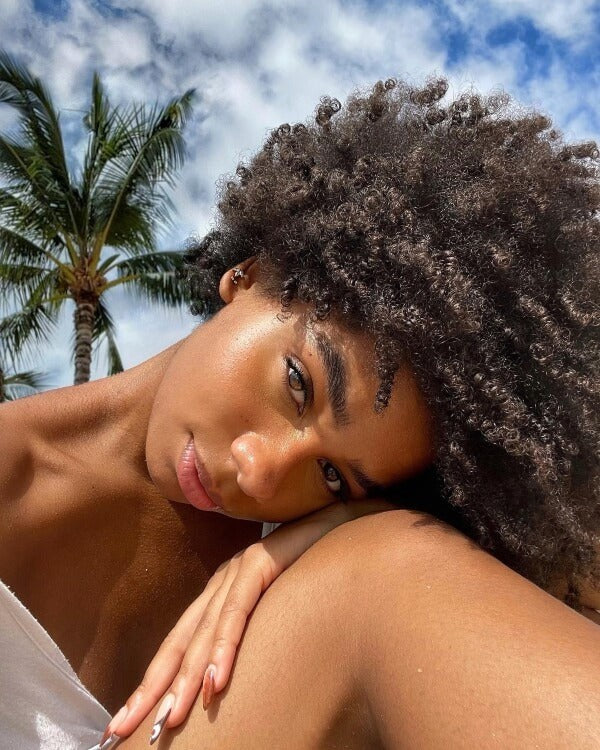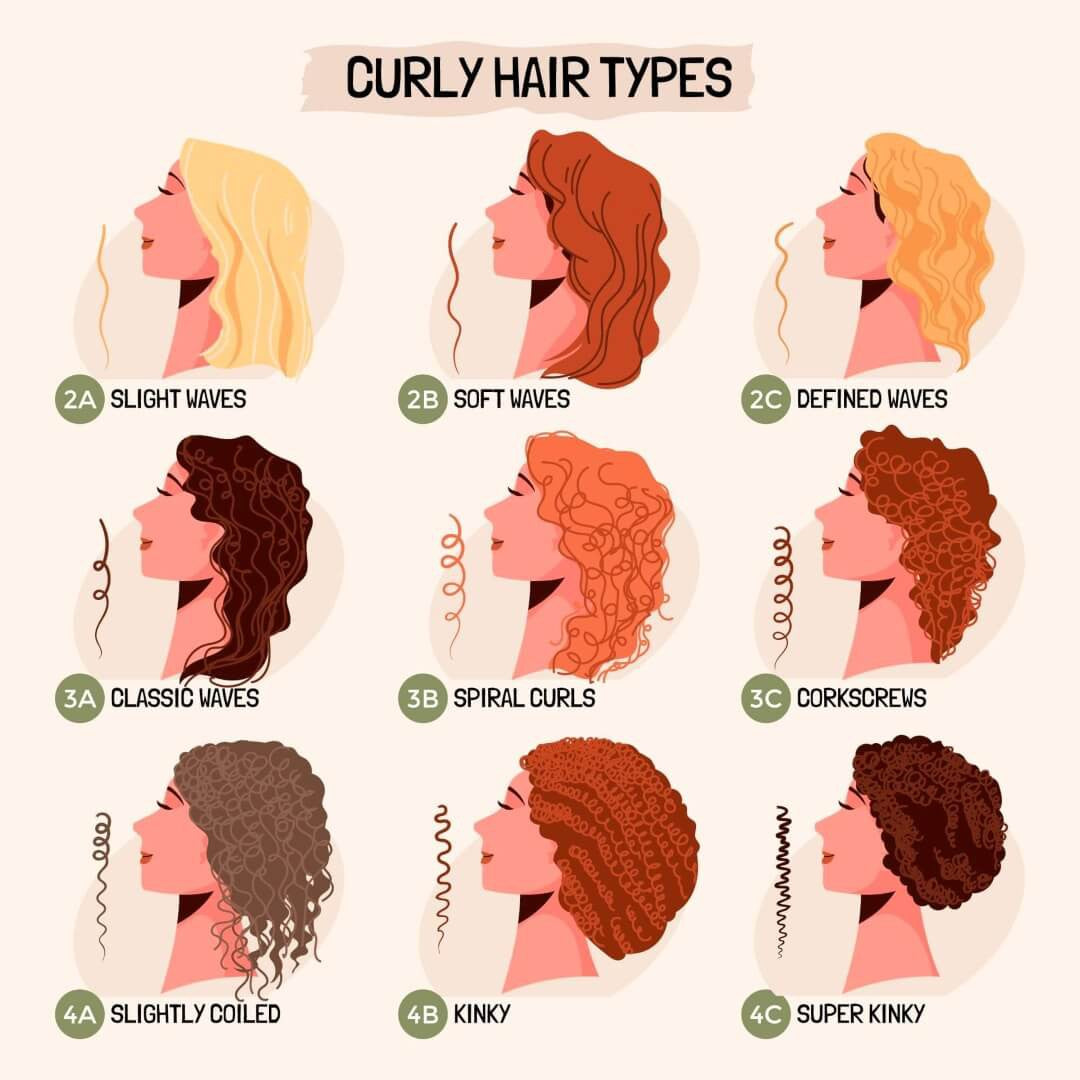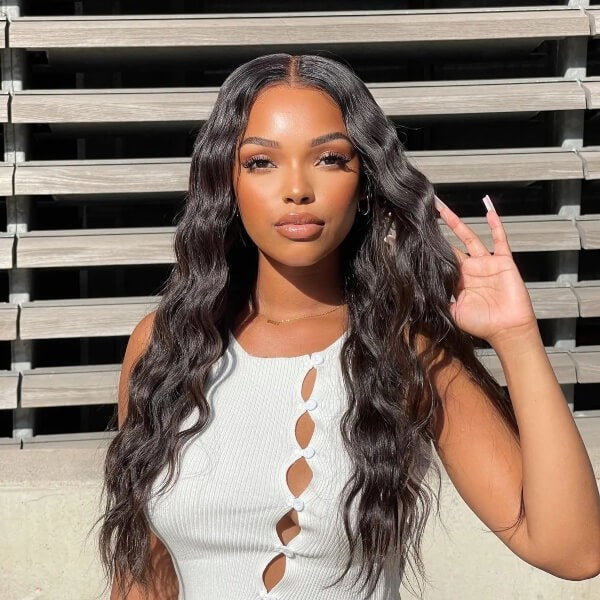Do you ever struggle to figure out your curl type? You're not alone! As a curly girl myself, I've been there. All the different curl typing systems like Andre Walker, LOIS, and DevaCurl can make your head spin.

But knowing your unique curl pattern is so important - it's the first step to finding the right products, techniques, and styles to take your curls from frumpy to fabulous!
In this post, we'll break down the different curl categories from loose waves to tight coils. I'll explain the characteristics of type 2, type 3, and type 4 curls and how to tell them apart.
You'll also learn why factors like density, strand thickness, and porosity make a difference in your curl pattern. Plus, how to handle "mistyping" when your curl type just doesn't fit neatly into one box.
By the end, you'll be able to decode your own unique curl texture. And saying goodbye to bad hair days for good! Let's dive in...

The different hair typing systems (Andre Walker, LOC, DevaCurl) and how they categorize curls
The main curl typing systems are Andre Walker, LOC (length, oiliness, curl size), and DevaCurl. Andre Walker is the most common, categorizing hair in types 2, 3, 4 based on curl size. LOC focuses on hair properties like length and oiliness. DevaCurl ranks curls from wavy to tight coils on a scale 1-4. All systems group curls from loose waves to tight coils, but they use slightly different criteria.
How to identify your curl pattern - examining curl size, shape, and texture
Start by washing and conditioning your hair, then letting it air dry fully without any product. Examine the curl size - tight ringlets or loose waves? Look at the shape - are they springy ringlets, or flat S-shaped waves. Check the curl texture - is it fine and glossy or thick and frizzy. The size, shape and texture combined determine your curl type. Make notes on different sections to see variations.
Type 2 curls - ranging from loose waves to ringlets
Type 2 includes loose, stretched out S-waves, waves with some thickness, and defined ringlets. Waves have an S-shape and are on the thicker side. Ringlets are springy spirals about the width of a pencil, maximum 2 inches long. Type 2 hair has lots of volume with shine, and is low maintenance.
Type 3 curls - from tight spirals to corkscrews
Type 3 ranges from tight spirals to corkscrews. Tight spirals are springy and defined, with a coil diameter less than 2 inches. Corkscrews are tighter than ringlets, with sharper angles rather than a round shape. Type 3 curls tend to have high volume and definition. The curls are bouncy and elastic.
Type 4 curls - tight coils and zig-zag patterns
Type 4 includes tightly coiled strands that when stretched are only a few inches long, forming zig-zags. The coils are very narrow, less than a pencil width. This hair has lots of shrinkage, drawing up 70-80% when dry. It's fragile and prone to dryness when not cared for properly.
The importance of knowing your curl type - for products, styling, and care
Knowing your curl type helps you choose the right products and techniques. Type 2 curls need lightweight creams and salt sprays for texture. Type 3 curls benefit from curl creams and gels for definition. Type 4 coils require heavy moisturizers and styling aids with hold for shrinkage. Proper styling and care will bring out your best curls.
Mistyping - when your curls don't neatly fit into one typing system
It's common not to fit neatly into one curl type. You may have looser waves on top and tight ringlets underneath. Or tight coils on your crown but spirals by your neck. This is due to variations in curl pattern across your head. Don't stress if your curls are a mix of types - work with your unique blend.
Factors that affect curl pattern - thickness, density, porosity
Things like strand thickness, density, and porosity impact curl pattern. Fine, thin strands mean your wave/curl will be looser. Dense hair with many strands bunched together lead to more defined clumping. Porosity also plays a role - hair with more open cuticles tends to get tighter curls.
Curl variations - differences in curl types on your head
It's common to have looser S-waves at your hairline, with tighter curls at the crown or nape of the neck. Or to have a mix of curl sizes all over your head. Some parts may be type 2, while underneath is type 4. Accept the variations - work with them rather than fighting against your natural pattern.
Embracing your unique curl pattern and learning what works best
Typing your curls helps you work with them, not against them. But don't get too caught up in strict typing. Instead, embrace what makes your hair unique and keep tweaking your routine until you find the products, techniques and styling that help your curls look their best!

Here is a list of common questions and answers related to curly hair types:
Q: What are the different curl types?
A: The main curl types are type 2 (wavy), type 3 (curly), and type 4 (coily). Type 2 ranges from loose waves to ringlets. Type 3 goes from spirals to corkscrews. Type 4 is tight coils and zig-zags.
Q: How do I figure out my curl type?
A: Wash and condition your hair, then let it air dry. Examine the curl size, shape, and texture to categorize your curls. Make notes on different sections.
Q: What if my curls don't fit one type?
A: It's common to have a mix of types or "mistyping." Work with your unique blend rather than forcing your hair into one category.
Q: Does curl type matter for products and styling?
A: Yes, knowing your curl type helps determine the right products and techniques. Type 2 does well with creams. Type 3 needs gels for definition. Type 4 requires heavy moisturizers.
Q: Why does my curl pattern seem to change?
A: Hormones, weather, damage, and product buildup can temporarily alter curl pattern. Your underlying texture remains the same.
Q: What impacts natural curl pattern?
A: Density, thickness, porosity, health of hair cuticle all play a role in curl formation and appearance.
Q: Should I embrace or change my curl type?
A: Embrace your natural texture! Focus on optimizing your curls' health and appearance rather than attempting to alter curl permanently.

Understanding your unique curl pattern is an important first step in your curly hair journey. While typing systems provide a useful starting point, don't stress if your curls are a mix of types or seem to change over time. Focus on bringing out the health and beauty of your hair's natural texture. Experiment to find the products, techniques and styles that work best for your one-of-a-kind curl pattern. With the right customized routine, you'll be able to embrace your hair's natural tendencies, rather than fighting against them. Say goodbye to frizz and bad hair days by working with your curls, not against them. You and your hair will both benefit when you learn to love your natural texture.
I aimed to summarize the key points and end on an empowering, optimistic note. Let me know if you would like me to modify or expand this conclusion paragraph further. I'm happy to keep refining it until you have an effective wrap up for your informative blog post on curly hair typing!


